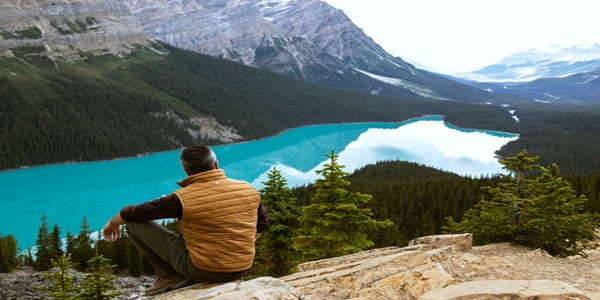What are Australia’s best cities to work and live in? Australia is huge: a boundless country that also represents the lion’s share of an entire continent, Oceania (once simply called Australia). Despite the abundance of space you can’t say it’s overpopulated. It has about 1/3 of the inhabitants compared to Italy (more or less 24 million people) who share an area 25 times larger.
The choice of places to move is therefore equally wide, but the best opportunities, as is natural, are found in large cities, which are mostly located along the coast and are concentrated mainly in the south-east. In recent years here are forming two major urban concentrations: on the one hand there is the area that has as its center Sydney and as a border Newcastle to the north and Wollongong to the south, on the other hand the megalopolis that includes the whole wide coastal strip between Melbourne and Adelaide.
Choosing where to move is not an easy decision, especially considering the long distances between one part of the country and another. You need to be well informed. Follow our travel guides and in the course of the article we will explain the characteristics and advantages of what are considered the best Australian cities.
Sydney
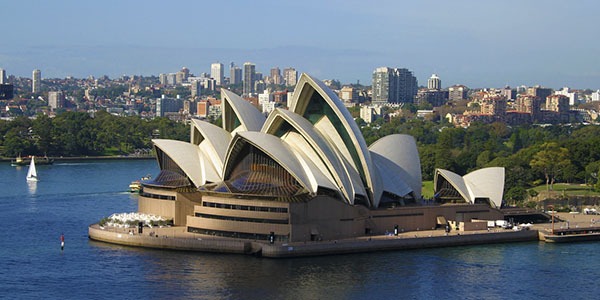
It is impossible not to mention Sydney as the first of Australia’s best cities, although despite what many people think, Sydney is not the capital of Australia, but rather its largest city and its main economic center. A real metropolis that recalls the skyline of many American cities with its skyscrapers and many buildings that have become true icons of modern architecture (such as the Opera House that is reflected in the waters of its Gulf), it is the country’s main port, as well as its hub for industrial and financial activities. The city is also know as one of the best destinations for solo female travelers.
Here you’ll find Australia’s largest companies, from manufacturing to technology, from education to tourism, from culture to creativity, as well as the largest financial institutions and major banks. Job opportunities in general are very good, with an unemployment rate below the national average (this year it has been estimated that the Australian average will be 6.3%, while in the state of which Sydney is the capital, New South Wales, will be 5.7%) and is in fact considered among the best Australian cities to move to, along with Melbourne.
Many of its economic activities are concentrated in the Central Business District, also known as the City of Sydney, where the average payroll is higher than the rest of the city, but which is also the most expensive, not to say prohibitive, area in which to live. Much more accessible are the suburbs in the western part of the city, whether you are looking for a lively area suitable for going out and having fun (Inner West), or you are looking for something more peaceful and appropriate for a family (Hill District or Northern Beaches). Western Sydney is also home to the largest percentage of the immigrant population. Unfortunately, however, Sydney remains the city with the highest cost of living in Australia.
If you visit Sydney for 3 days you will need a detailed guide, but If you move to Sydney to study, you have to know that the city offers two of the top 100 universities in the world. The University of Sydney and the University of New South Wales are two of the best places where you can study, and that’s why Sydney has been ranked as the sixth best city in the world for students.
New South Wales is also famous with its dog friendly beaches, so if you have a dog and you love the sun, Sydney is definitely your place!
To get around the city centre, considering that the City-West axis is very busy, there is an extensive public transport network, which covers virtually the entire metropolitan area and has buses, a light rail transport system made with trams and boats. The first metro line is scheduled to open in 2019, serving more than 65 km and having 31 stations once the entire project is completed.
Melbourne
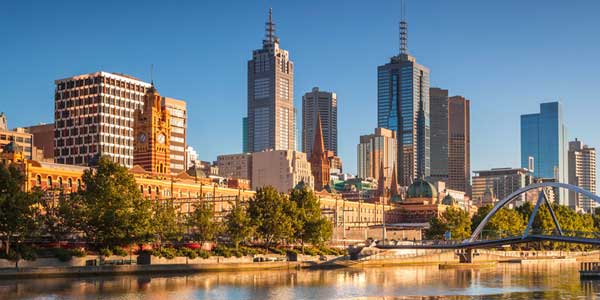
Australia’s second largest city by number of residents, it is considered the country’s cultural capital, the one with the most vibrant social and nightlife, as well as the birthplace of cinema, television and the main Australian art movements. The Economist has also named it one of the world’s best cities to live in for five consecutive years.
In Melbourne, job opportunities are good, especially in the automotive field (General Motors, Toyota and Ford are located in the city), aviation, construction and engineering, but also in financial services, health and ICT. Melbourne is also Australia’s commercial heart par excellence and is home to the country’s largest shopping centre, the Chadstone (also known as Chaddy), in the suburb of Malvern East, which offers a number of opportunities for work in the retail sector. In general, the city and the rest of the region (Victoria) have a slightly lower unemployment rate than the national average. It is also one of the best places to visit in December if you don’t live here.
Melbourne is also a good choice if you want to study in Australia: here you will find the Royal Melbourne Institute of Technology, the University of Melbourne and Monash University. In addition to academic excellence, there are plenty of opportunities to go out, socialize and have fun (including clubs, festivals and events) and also good opportunities to earn money while studying with a job in the hospitality industry.
The cost of living is not comparable to that of Sydney, but remains an important item of expenditure. If you’re on the budget, stay away from the most posh areas of the city (Toorak, which is synonymous with “rich, snobbish”, Canterbury, Brighton and South Yarra) and choose areas like Footscray, multicultural and fairly cheap, Altona, full of greenery and parks, or the northern suburbs like Fitzroy and Carlton, lively neighborhoods where the local art scene is concentrated as well as hosting many Italian immigrants.
The centre of Melbourne has a regular layout, with parallel, perpendicular streets, so it’s very easy to walk around. The public transport system covers the entire metropolitan area between trams (its tram network is the largest in the world), the metro system and buses.
Canberra
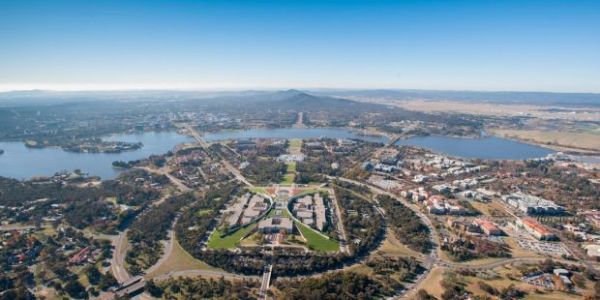
Canberra, located between Sydney and Melbourne, is a compromise solution. It was artificially created to become the capital of the country and thus resolve the eternal conflict between the two cities just mentioned. Much smaller and inserted in a landlocked state, it still attracts many emigrants as the seat of parliament and institutions. It has an unemployment rate well below the national average (4.3% against 6.3%) and wages, on average, are higher. About half of its workforce is employed in the public sector, of course, but the private sector is also quite well developed and several companies linked to the cultural industry are emerging.
Canberra offers many opportunities to study, such as the University of Canberra, the Australian National University, which is among the top 20 universities in the world, and the Australian International Hotel School specializing in courses related to hospitality.
Discover: Best Places To Visit In New Zealand
The city has been rationally planned and is divided in half by Lake Burley Griffin (named after the architect responsible for the design of Canberra). To the north is the shopping and commercial area, which extends into the suburbs where the majority of the population lives. To the south there is the so-called parliamentary triangle (the area enclosed between Capital Hill, where there is the parliament, City Hill with the town hall and Russell Hill with the Ministry of Defense) and embassies, in whose residential areas the cost of houses is much higher. In general, however, it is the Australian region (including the rest of the state) where it is more convenient to buy a house.
Public transport is less developed than in other large cities, since its rational structure makes it suitable for car traffic: on average in twenty minutes you move from one side to another and traffic jams are rare. There is a bus service and a network of cycle paths that covers almost the entire city.
Brisbane

Brisbane, on the east coast of the island, is a liveable and relaxed city, offering many opportunities and is the third largest urban centre in the country (a record that periodically fights with Perth), all things that make it without a doubt one of the best Australian cities to move to. Because of its location, it enjoys a more pleasant subtropical climate than Sydney and more stable than Melbourne.
As a centre of economic expansion, there is no shortage of job opportunities in various sectors, especially in hospitality, tourism, health, finance, business and manufacturing. The city administration has recently invested heavily in science and technology, including academic and research, as evidenced by the advanced departments of biotechnology and biomedicine in the city’s major universities (the University of Queensland and the Queensland University of Technology).
From the point of view of the cost of living, Brisbane enjoys better prices than Melbourne and Sydney, especially if you move a little away from the city center, located along the banks of the river Brisbane, and you look in the suburbs, which remain within a reasonable distance from the Central Business District. Among the most interesting peripheral areas are Auchenflower, Paddington and the Morayfield area.
Transportation is well developed, between buses, trains and ferries, while the center, a compact area that stretches over just over two square kilometers, is easy and fast to walk.
Perth

Exactly across Australia from Brisbane, Perth is the largest urban centre on the west coast, with a very mild climate and a relaxed atmosphere. Definitely geographically isolated (it is considered the most isolated state capital in the world due to its distance from the nearest inhabited centers), it offers great opportunities in the mining sector thanks to the abundance of natural resources found in the western regions, as well as in manufacturing (especially textiles), ICT and finance, although to a lesser extent than other major cities in the country.
To study there is an embarrassment of choice with its four public universities (the University of Western Australia, one of the best in the country, Curtin University, Murdoch University and Edith Cowan University) covering all disciplines.
The cost of living is still quite reasonable, although the price of housing has risen considerably in recent years and isolation leads to lower availability and therefore higher costs for certain products. The best and cheapest areas to live in remain those north of the city.
An efficient public transport system, including metro, buses and ferries, can be used to get around the city. The central area is free of charge (look for the Free Transit Zone logo at bus stops or metro stations).
Definitely of the best places even if you are just a curious traveler or simply a tourist.
Adelaide
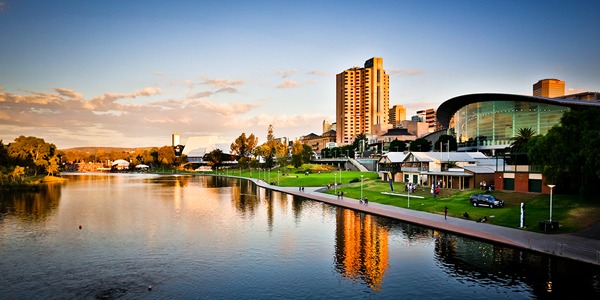
We continue our roundup of Australia’s best cities with South Australia’s capital Adelaide. This city is increasingly establishing itself as a destination for expats and as one of Australia’s best cities to move to. It has a similar climate to the Mediterranean, low prices and a relaxed lifestyle. The Economist has put it in the top 10 of the most livable cities in the world in recent years and there is no shortage of job opportunities. The sector that employs the most people is related to health and social services, followed by retail, manufacturing (half of the cars produced in Australia come from the General Motors plant near Adelaide), defense and hi-tech. It is estimated that each year the city can absorb 5,000 emigrants for its own needs of skilled workers.
Also from the point of view of education, the city is in full development and is trying to redefine itself as the “Australia’s education hub”. Among the main institutions are the University of Adelaide, the University of South Australia and Flinders University.
The cost of living is still reasonable, both for products and services and for the rental or purchase of a house. Of course, prices are better in inland suburbs, such as Aberfoyle Park, Belair and Banksia Park, while homes along the coast are more expensive.
A bit like Canberra, although not so extreme, Adelaide has developed according to a specific urban planning project, called Light’s Vision, which has organized the city center on the model of a grid, with five large squares inside and all around a ring of parks. This rational structure facilitates car journeys, but the whole city centre is well covered by a system of metro, tram and bus (the latter also serve the rest of the city in a fairly capillary way).
Darwin
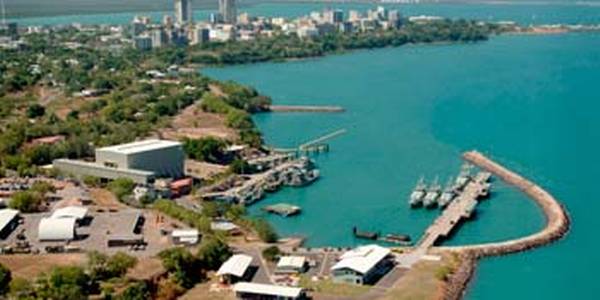
Darwin is the capital of the Northern Territory, one of the least populated and wildest areas of the country. Originally an outpost for pioneers, it is still the first port of call for people from Asia and a multicultural centre where you can expect to find many more emigrants. The cost of living, despite being a much smaller urban settlement than Sydney or Melbourne, is quite high, both for the price of the houses and because, given its isolated location, certain products tend to cost more than in the rest of the country.
From the employment point of view, Darwin is experiencing an important phase of development, both demographic and economic and structural, which allows migrants who choose this destination to find work in the construction, hospitality, health and public administration sectors. The city also has a university of excellence (Charles Darwin University), which has become one of the 2% of the best universities in the world. Being a fairly small town, the car is the preferred means of transport of its inhabitants, but it is still covered by a bus network. As mentioned before, the price of houses is high, especially in coastal areas such as Fannie Bay, Baview, Larrakeyah and Brinkin, while the suburbs inland to the north are cheaper, such as Millner, Coconut Grove, Wanguri and Wulagi.
Hobart
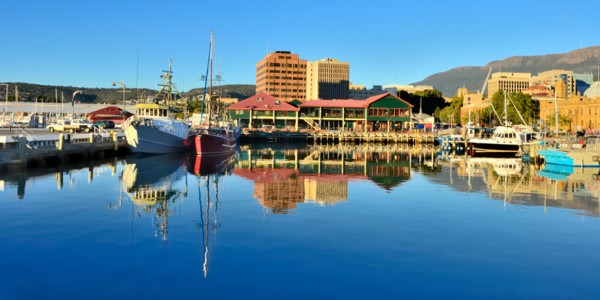
Born as a penal colony and second oldest city in the country, Hobart is the capital of the State of Tasmania and is located in the far south of the island, of which it is also the most populated urban center. Surrounded by spectacular nature, it is not suitable for those seeking a perennial spring, as it is the southernmost settlement in Australia and therefore the coldest. It enjoys a relaxed atmosphere and one of its suburbs, Kingston, has been recognized as the most family-friendly in the country. A port city par excellence and starting point for Antarctic expeditions, its economy is linked to the maritime and naval sectors, as well as tourism, manufacturing and recently also wine.
Its university (University of Tasmania) is a recognized institution, which is among the 2% of the best academies in the world.
The cost of living is generally lower than in the rest of the country, but some services and products are more expensive and some areas, such as those along the Derwent River, are expensive from the point of view of renting and buying a house, while properties in the suburbs of North and West Hobart are more affordable. There is a bus system to get around the city, while the tram network was disused in the sixties, as well as the ferry service (there are still only water taxis).
These are the best Australian cities to live and work in. Are there any other cities in Australia that you would like to know more about? Leave a comment.




